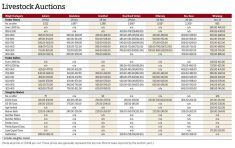North American grain and oilseed markets remained highly volatile in early March, with wheat seeing some of the largest price swings as traders reacted to Russia’s invasion of Ukraine and tried to figure out what the situation might mean for global trade.
Chicago soft wheat originally led the three U.S. wheat contracts to the upside, rising as high as US$13.635 in the May contract on March 8, before crashing by US$3 per bushel off of that high in the following days. Kansas City and Minneapolis futures were initially up as well, hitting highs of US$12.995 and US$12.07 in their respective May contracts before also retreating. Crude oil hit prices not seen since 2008, but also backed away from those highs when the inevitable sell-off came.
The ICE Futures canola market hit its highest levels ever during the week, but had yet to see a substantial correction off of those highs at the time of this writing (March 11). While a profit-taking drop is inevitable for the Canadian oilseed, market participants made sure to note that there’s still a case to be made that canola is underpriced compared to other competing commodities.
European rapeseed was trading at a premium of about US$125 per tonne above the canola market during the week, which was considerably higher than the historical average. Malaysian palm oil and Chicago Board of Trade soyoil futures have also outperformed canola to the upside recently. Much of that has to do with the fact canola was already trading in the stratosphere for some time, after the drought last summer necessitated demand rationing. The other markets have just caught up to, and in many cases surpassed, canola.
May canola hit a high of $1,143.70 per tonne on March 9, and was only trading $10 off that high by Friday morning, March 11. New-crop contracts were also very solid during the week, holding well above $900 per tonne.
Profit-taking corrections could easily take $50 to $100 per tonne out of the canola market, but as long as everything else remains strong there’s still plenty of room to the upside.
However, as seen in wheat, large price moves may be the norm over the next while as the ripple effects of the situation in Ukraine roil the world markets.
Traders have many questions, but not many firm answers. Where is the price of oil going? What does that mean for fertilizer and fuel? How much less wheat will Ukraine export this year? How much more can Australia or North America move to make up the slack? Will Ukrainian farmers be able seed their spring crops? What’s going on with soybeans in South America? Will North American farmers adjust their acres in response to any of this? Et cetera. As answers trickle in, that could bring some stability, but, as is often the case, may also just lead to more questions.
















